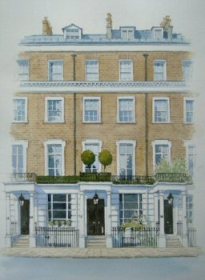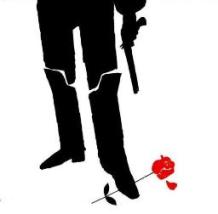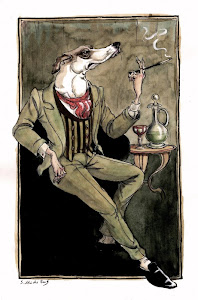 Can you dance? Believe it or not, I can. It’s not something about which I am very talkative. But when I was aged 10, my mother enrolled me in a year’s worth of ballroom dancing classes at a dancing school in New Canaan, Connecticut. I mention it because a recent news article about the growing popularity of ballroom dancing amongst Czech teens in Prague has nudged my memory.
Can you dance? Believe it or not, I can. It’s not something about which I am very talkative. But when I was aged 10, my mother enrolled me in a year’s worth of ballroom dancing classes at a dancing school in New Canaan, Connecticut. I mention it because a recent news article about the growing popularity of ballroom dancing amongst Czech teens in Prague has nudged my memory.I attended evening lessons twice a week. The first few times filled me with acute apprehension. As we pulled up in my mother’s green Mercedes-Benz motor car, I sat, silent and unmoving, in the cold leather seat, absolutely dreading the next two hours. Outside the school doors congregated a group of nervous and chatting youngsters, school friends, our neighbours' children in New Canaan, a shivering mass of blue blazers and frilly dresses. For boys, the school dress code demanded a navy blazer, dark worsted trousers, OCBD, tie, dark socks, and dress shoes. Most boys wore penny loafers such as Weejuns or a variation thereof. A few daring chaps wore tartan trousers (see photo above), an audacious innovation of which I was secretly envious.
 In the ballroom itself the girls lined up along the wall on one side, the boys on the other. When we were told to choose a partner, the boys walked across the room, offered a hand to the girl of their choosing, and asked her to dance. The music started and we were on our way, the teachers calling out instructions and occasionally intervening to guide a wayward couple. I became particularly fond of Waltz music, which I found to be a more formal and dignified style and more in keeping with my family's cultural tastes.
In the ballroom itself the girls lined up along the wall on one side, the boys on the other. When we were told to choose a partner, the boys walked across the room, offered a hand to the girl of their choosing, and asked her to dance. The music started and we were on our way, the teachers calling out instructions and occasionally intervening to guide a wayward couple. I became particularly fond of Waltz music, which I found to be a more formal and dignified style and more in keeping with my family's cultural tastes.Eventually I learned to enjoy the experience. But it was not something I anticipated with anything like excitement. What my mother was thinking when she enrolled me, I can only guess. Maybe she wanted to soften the rough edges she could already perceive starting to form around me. True, I was a querulous youth, independent and headstrong, apt to spend weekends and summer holidays on my own, tanned, blond, and barefoot, exploring the woods or the rivers and ponds. Ballroom dancing class, I think, was a way to ameliorate the selfish tendencies of a burgeoning little savage. It was an opportunity for me to socialise with peers and to develop confidence with the opposite sex in a more decorous setting.
 But soon afterwards, as I have mentioned before, my mother left for a drug-soaked New Age commune in San Francisco. I did not sign up for another year of ballroom dancing. What if anything can I salvage from the debris? What remains? Only this: I am grateful for having had the chance to learn something new. I am still able to cut a mean rug today. Most of all, I have warm memories of my ten-year old self, anxious and grumpy in navy blazer and itchy wool trousers, grasping my dance partner's white begloved hands and bravely stepping on to the floor together, and, quite possibly, leaving her heart flickering in my wake. Or so I like to imagine.
But soon afterwards, as I have mentioned before, my mother left for a drug-soaked New Age commune in San Francisco. I did not sign up for another year of ballroom dancing. What if anything can I salvage from the debris? What remains? Only this: I am grateful for having had the chance to learn something new. I am still able to cut a mean rug today. Most of all, I have warm memories of my ten-year old self, anxious and grumpy in navy blazer and itchy wool trousers, grasping my dance partner's white begloved hands and bravely stepping on to the floor together, and, quite possibly, leaving her heart flickering in my wake. Or so I like to imagine.





























